#Articles of Capitulation of Montreal
Text

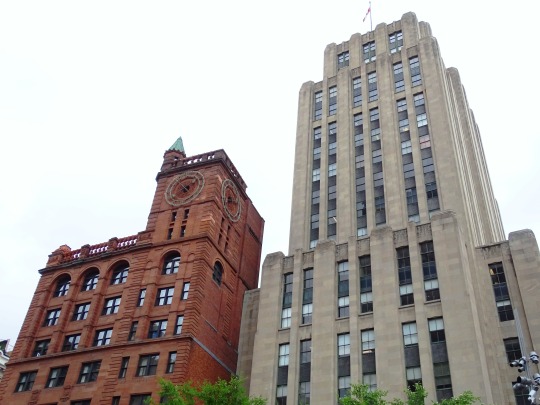
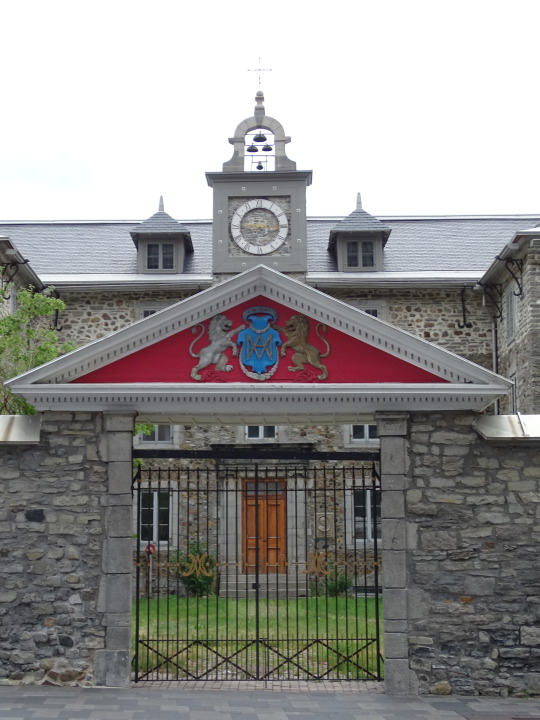
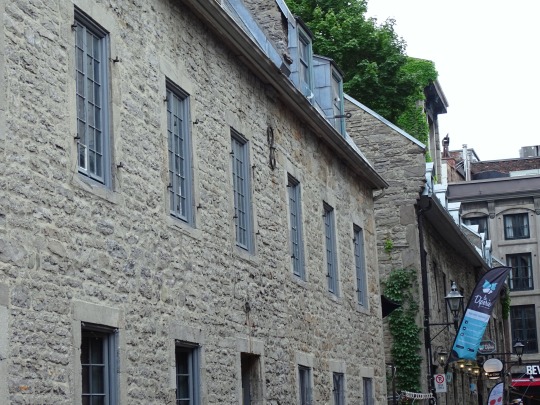

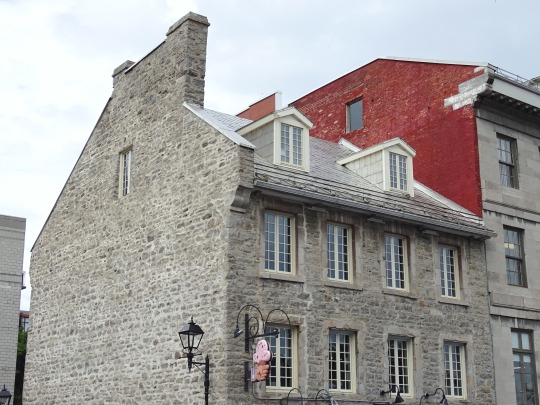
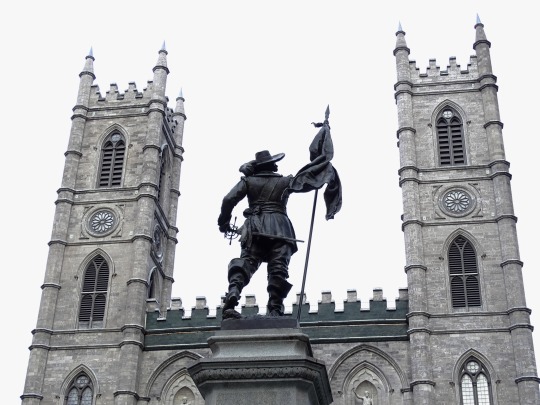
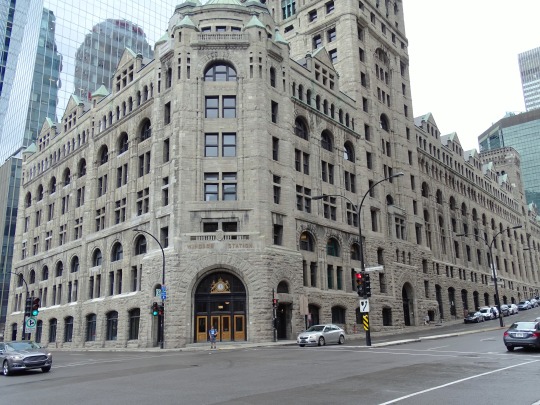




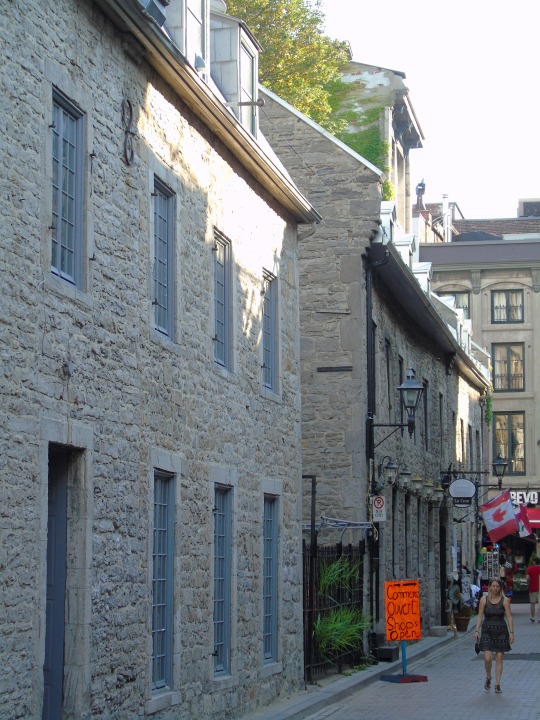

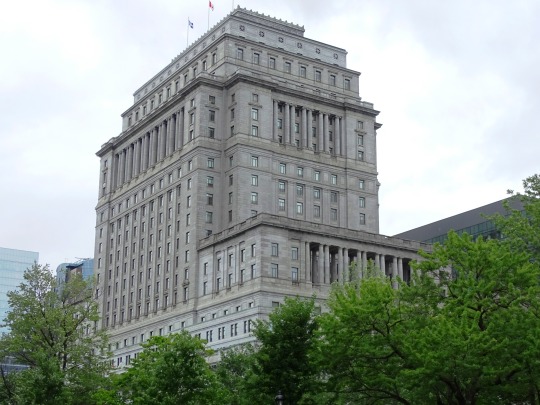
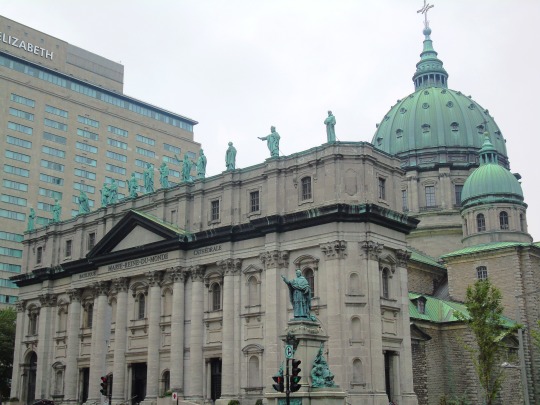
The British, under General Jeffery Amherst, marched from Lachine through Nazareth Fief (the name used for Griffintown at this time), through the Recollet Gate and into the walled city of Montreal. The Articles of Capitulation of Montreal were signed on September 8 1760, in the British camp before the city of Montréal. Most of the North American fighting ended with the surrender of Montréal.
#Articles of Capitulation of Montreal#8 September 1760#travel#original photography#vacation#tourist attraction#landmark#architecture#cityscape#Montréal#Québec#Canada#summer 2018#2015#Bonsecours Market National Historic Site of Canada#Édifice Lucien-Saulnier#Basilique Notre-Dame de Montréal#Château Ramezay#city hall#Saint-Sulpice Seminary#Notre-Dame-de-Bon-Secours Chapel#Canadian history#Windsor Station
2 notes
·
View notes
Text
Very few Canadian’s pay any attention to civic politics. The people that run our towns and cities are elected by less than 35% of eligible voters. This is a strange democratic deficit given that we are most directly effected by services delivered by our local governments. This needs to change drastically because in the last several decades massively funded Charities and NGO’s have been advancing a totalitarian agenda almost unnoticed. Every Canadian should be sending Access to info requests for the funding records of their local politicians with a close eye on Charities and NGO’s. This is your information demand it
We will have a look at the massive and obvious these foundations have over our civic governments and bureaucracies openly and with the help of a brave whistle-blower Barret Blackwood we will se how the bend charity laws to finance the election of their puppets . Barret has been trying to get his story to the Canadian MSM unfortunately this information is still exclusive to Stormhaven Media
For any of you not convinced of the power of local politicians and bureaucrats the Ideologically selective lockdowns, mask laws and the immediate capitulation to the demands of foriegn funded Terrorist groups like BLM and Antifa should be enough of a wake up.
The Ideological zombies of the Globalist elites inhabit every level of our Bureaucracy Judiciary, and Academia, and have specifically targeted cities political and bureaucratic structures to enforce compliance with an agenda few in Canada’s urban areas even know they are a part of.
They have been busy for well over a decade infiltrating and subsuming city politics across Canada. No longer do your city council worry about pedestrian matters like ..well pedestrians. Or sewage or economic development or any other mundane city service or indeed the safety and well being of their citizens.
In 1996 Yankee shopping mall Billionaire Joel Solomon used Tides Canada to place Gregor Robertson and his Vision Vancouver puppet in power with disastrous results.
“The Tides Foundation has some very long, strong tentacles into all sorts of businesses that all support Vision Vancouver, not as a political party, but as a movement, and this is extremely troubling,” says Alex Tsakumis, a former political analyst for the newspaper 24 Hours and former director of Vancouver’s municipal Non-Partisan Association opposition party, who blogs on political affairs. “And [Joel] Solomon is the green father, if you will, behind this social engineering movement.”
Kevin Liban, National Post, 2010
for more see Vivian Krauses excellent work
https://fairquestions.typepad.com/rethink_campaigns/
Another Tides puppet LeadNow has also been very active in distorting Vancouver city politics
Massively funded and politically connected NGO’s and Charities have been working for years to fund compliant candidates in every city and town in Canada. Many of these programs are quite open.
The Rockefeller Foundation funded 100 Resilient cities is one example
Toronto is just one of the Canadian Members of this group and went right out and hired that resilience officer who will shape city policy fundamentally impacting the lives and rights of millions. This will be done without any form of democratic consent of the population. and all of this done by an individual who is a direct paid employee of the Rockefeller Foundation. Not very subtle.
The two-year position will be fully funded by the 100 Resilient Cities project, which was founded in 2013 by the Rockefeller Foundation and aims to help cities across the globe become more resilient in the face of modern social and economic challenges. The Foundation will allow cities access to almost $200 million in funding for research and consultations, as well as a network of CROs for building relationships and sharing advice.
https://www.itworldcanada.com/article/toronto-appoints-its-first-chief-resilience-officer/394068
Elliot even has a propaganda department
youtube
Calgary is also part of this little Cabal with its disastrous Mayor Naheed Nenshi
http://www.savecalgary.com/who_paid_for_mayor_nenshi_s_europe_trip
https://www.cbc.ca/news/canada/calgary/100-resilient-cities-nenshi-calgary-rockefeller-1.3599417
As well as Vancouver
The appointment of a chief resilience officer (CRO) is part of the 100RC program, and is funded by the organization through a grant to the city. As CRO,McPherson will leverage resources and knowledge from 100RC, its partners, and other member cities to drive action to address the city’s most pressing resilience challenges.
McPherson will lead the development of the citywide Resilience Strategy to ensure Vancouver’s residents, communities, institutions, businesses, and systems can persist, adapt, and grow no matter what kinds of chronic stresses and acute shocks Vancouver may experience.
youtube
and Montreal
Louise Bradette Resilience Officer
strategie-montreal-ville-resiliente-en
These Bureaucrats controlled by the Rockefeller Foundation have been given the power to reshape civic government to prepare for the tyrannical New World Order delineated in the UN 2030 plan. By way of context the Rockefeller’s funded Eugenics and the Nazi party.
Sometimes the routes of infiltration and control are for more circumspect. Lets examine the case of Victoria BC with the help of whistleblower Barrett Blackwood in his own words. But first lets have a look at what the city council of Victoria has been up to
So here’s how George Soros put them in power
Background info … In 2012 to 2015 I was heavily embroiled in several (5) legal cases that I bought forth against a former employer and (at that time) my current landlord here in Victoria.
These cases were tenant-landlord actions that were heard by the B.C. Residential Tenancy Branch.
The Landlord (Robin B. Kimpton) was / is perhaps Victoria’s most notorious and well known slumlord in Victoria with multiple buildings being condemned and shut down by City officials , displacing many families onto the street.
As a long time tenant and employee of this landlord I was in a unique position (with much documentation) to stand up to this landlord and succeed where so many tenants had failed in the past.
I was able to gain unprecedented decisions against this landlord and I recieved near 100% rent abatements for 1.5 years.
Due to this success, I was chosen in 2017 by TAPS (Together Against Poverty Society) from among their thousands of files to join a small hand picked group of 10 distraught tenants to form the original VTAG steering committee intended to work with operatives in creating what TAPS called “a tenant peer support group”
This group would later become known as the incorporated non-profit political organization called VTAG (Victoria Tenants Action Group Society)
As I will later explain, I believe this was the early stages of a complex plan to set up a newly formed non-profit that would enable the infusion of funds into the 2018 civic election and set the stage for further control over the outcomes of elections here and insert BCGEU funds and party politics into city hall, all in the name of helping renters.
I now believe that distraught tenants were used to legitimize a so called tenant peer support group that would later become a political organization that could be weaponized and used for electioneering purposes.
Tactics:
When the B.C NDP took power in B.C. they brought forth a highly welcomed Campaign Finance Reform that made it illegal for election campaigns and its candidates to receive funds from Unions and Corporations and would limit the amount on individuals contributions to $1200.
This seemed a brave stance given that the B.C. NDP has traditionally relied on Union money for their activities.
However It seems now that political forces here in Victoria, that have direct and intricate ties to the NDP / Greens, have been maneuvering and attempting to insert funds through the back door via registered non-profits that can legally register as ‘Third Party’ election participants.
These NON-profit Third parties can legally use mass amounts of funds they possess when having affects on any election.
These registered non-profit ‘third parties’ can operate relatively unchecked as to their activities and go unchecked as to who actually runs and supports them.
These registered non-profits are not limited as to how much money can be donated to them.
I believe I have unwittingly stumbled across and documented one such example that has come to be known here in Victoria.
Additional credentials relative to this case:
Barrett R. Blackwood
-The Volunteer Sign Coordinator in the Campaign to Re-elect Lisa Helps
-Worked briefly as a volunteer with the now Victoria City Councilor Sarah Potts in the 2015 federal Green Party campaign to elect Joanne Roberts in Victoria.
-Was invited into the home of the now past Victoria City Councillor and now current NDP MP Laurel Collins to help develop the Together Victoria housing platform for the 2018 civic election
-VTAG Steering Committee Member along with now Victoria City Councilor Sharmarke Dubow
-One of three Founding Directors of The Victoria Tenant Action Group Society
Here is where things get a bit complicated so I will try to explain a simply as I can.
There is much documentation to corroborate what I will state here so please feel free to request specific Docs. on any specific points I make or claim here.
I will attach here some documents that are by no means the limit of the massive amount of documents that demonstrate this case. A great amount of supporting documents and evidence (including photographic and audio evidence) has been compiled by an independent source other then myself.
As mentioned, I was one of 10 tenants invited by TAPS – Together Against Poverty Society to help form VTAG -Victoria Tenants Group Society.
(To be clear TAPS has a long history in Victoria for advocating on behalf of tenants and disabled folks here)
TAPS tenant legal advocates Emily Rogers (spouse to incumbent councilor Jeremy Loveday) & TAPS tenant legal advocate Yuka Kurokawa (also an organizer with the ‘Together Victoria’ political party) applied for and received $40,000 grant money from The Victoria Foundation to assist in the creation of VTAG in 2016.
This money was received by TAPS (a registered Charity) along with two other later grants amounting to $20,000 from The Catherine Donnelly Foundation totalling $60,000
The Victoria Foundation expressly forbids grant money be used for political purposes, as stated in their rules.
This requirement that funds from the Victoria Foundation NOT be used for political purposes likely explains why TAPS failed to report their political activities in their 2017- 2018 annual reports as required by the Canada Revenue Agency.
Two official complaints have now been filed with the CRA for this failure of TAPS to disclose political activity, those written complaints were sent along with copious amounts of evidentiary documentation.
Of note at this point is the fact that a new Grants manager at The Victoria Foundation who approved the funds was hired near the same time in 2016 with the personal recommendation of Mayor Lisa Helps (Victoria Foundation Grants Manager Rudy Wallace)
Victoria Foundation Grants Manager Mr. Wallace it turns out was also one of the initial organizers in the creation of a political party in Victoria called “Together Victoria”
My understanding is that Rudy Wallace is a political science grad from University of Victoria along with many of these players , including City councilor Ben Isitt.
Besides the obvious similarity in the actual names of these groups, Together Victoria (the political party) endorsed 3 candidates (Sharmarke Dubow , Sarah Potts , and Laurel Collins) all of whom have direct connection to B.C. NDP / Greens in the 2018 civic election here.
With the assistance of TAPS political wing VTAG (Victoria Tenant Action Group Society) all 3 members of this slate + two incumbent city councilors (Jeremy Loveday and Ben Isitt) were elected to Victoria City council in the 2018 election.
Lead up to the 2018 civic election:
During 2016-2017- and most of 2018 TAPS fails to actually create a separate ‘stand alone’ organization called VTAG (as they stated and claimed) TAPS and Together Victoria maintained control of VTAG despite claims to the contrary and then after years of delay switches into high gear just before the 2018 civic election, and registers VTAG – Victoria Tenant Action Group Society both as a society and as a third party election participant with elections B.C.
By this time (late 2018) I (Barrett R Blackwood) was the only one remaining VTAG steering committee member of the original 10 distraught tenants invited by TAPS that was still present and willing to sign up as an actual Director of VTAG. ( I became VTAGs Chair of Membership )
Given that a minimum of 3 Directors is required to form a Board, and given that TAPS had yet to fulfill its 2+year old mandate to its funders , and given that the 2018 civic election was a few months away , TAPS was forced to provide the other two Board members from its own ranks.
Two members of the newly formed political party ‘Together Victoria’ (TAPS advocate Yuka Kurokawa, and former NDP organizer Leslie Robinson) signed as Directors of VTAG
Leslie Robinson would later be identified as a founding member of a local housing co-op ‘Roots and Roofs’ that provided additional $15,000 of funding for specifically directed election activity by VTAG that assisted in the election of the politicians mentioned above. (the MERM campaign – Municipal Election Renters Mobilization campaign was conducted by VTAG during the 2018 election)
* of note is the now defunct Roots and Roofs housing coop was the only housing coop to ever receive funds directly from the city of Victoria.
* also of note the Roots and Roofs Director Nicole Chaland who approved and directed the use of the money given to VTAG for election activity is also a major organizer and contributor to the Together Victoria political party.
As the 2018 civic election drew closer, it became obvious to me as a VTAG Director that VTAG was in fact violating its pledge of neutral election activities on behalf of renters and was in fact promoting specific candidates endorsed by the Together Victoria political party in Victoria, and was actually promoting specific candidates. Namely the 5 candidates mentioned above.
-SEE combined election TV+2 flyer
-SEE Leslie Robinson email inviting VTAG volunteers to cooperate when accessing apartment buildings
for canvassing.
-SEE VTAG cavassing instructions sheet that contains the Together Victoria logo
As I began to make internal written objections to VTAG for these activities I was met with outright bullying and angry reprisals.
My personal character was immediately attacked by the group.
As one of three VTAG Directors and VTAGs Chair of Membership I was NEVER during VTAGs entire existence granted the authority or ability to communicate with VTAGs membership.
TAPS and Together Victoria operatives continually maintained control of the ability to communicate with lists of names and VTAG contacts.
The official address of VTAG operations continued to be that of TAPS offices well beyond the 2018 election.
Given my limited 7th Grade education and my complete lack of experience in forming a non-profit society I was an easy target for this group.
I was never given access to VTAGs Email accounts, Facebook account, Twitter,account or instagram account.
I continually requested and was denied access to lists of names and contact information that VTAG and other cooperating groups were accumulating and amassing in the name of VTAG leading up to the 2018 civic election.
I was denied meeting minutes of crucial VTAG steering committee meetings ( all of which is well documented )
My continued call for Membership meetings went unanswered and after the stark outcome of the 2018 civic election I was seriously attacked by the VTAG Board and was ironically and with malus removed as Chair of Membership due to what was termed my “lack of communicating with VTAG Members.” despite my being denied the access mentioned above.
In November of 2018 (after the 2018 election) VTAG is forced by me to address these concerns, given that I publicly went before Mayor and Council to begin inquiries and I began to talk with local media about this story.
The VTAG committee that was now made up of Together Victoria and associated operatives agreed to investigate my concerns.
The fake investigation that was conducted only amounted to a 47 page report that had the obvious purposes of discrediting me personally. However the VTAG report contains stark admissions and evidence that I believe the reports authors mistakenly felt I already had possession of. The Report actually provided me with the few missing pieces that of the puzzle that I needed to demonstrate my claims.
I submit to you this report as a beginning of many documents that I hope you will consider as you look deeper into this scandal and how our electoral process in Victoria has been hijacked by so called progressive forces, namely Together Victoria and its allies.
After the 2018 civic election VTAG goes mostly inactive and fails to carry out its first Annual General Meeting as required by the B.C. Societies act.
VTAG now (just as before the 2018 election) shifts into high gear just before the upcoming Victoria Bi-election.
After an 18 month delay VTAG holds an AGM where the group forms an agenda in my absence within hour of the meeting and refuses my participation as one of three Directors.
In that meeting, when I insisted on speaking at the so called AGM (that was attended and organized and chaired by Together Victoria operatives) I was removed by security and not allowed to present a well researched report.
Together Victoria official Breanna Merrigan attended the VTAG AGM and was given opportunity to speak and defend Together Victoria while I was denied a chance to speak and present my reports.
Attached is a conversation thread from a Facebook group of local independant tenant activists ( Victoria Precarious Tenants Association ) who attended and witnessed the VTAG AGM on Nov. 30th 2019.
https://www.facebook.com/groups/806133419732831/permalink/1057471411265696/
Attached is the VTAG internal report mentioned above.
I am willing to detail page by page the significance of this lengthy report as it contains several relevant pieces of information that may be overlooked if not put into context
Attached is the press release sent out by an uninvolved and independent researcher who was previously unknown to me, and who has no prior involvement with any of the individuals or groups involved in this election scandal.
It should be noted that this independent researcher was also the person responsible for the only successful 2018 complaints to elections B.C. regarding the illegal activities of Together Victoria’s opposing slate of candidates (New Council.ca)
If you continue to be interested in investigating this further please know that the documentation attached to this email is only a tiny part of the evidence linking,
VTAG – Together Victoria Political Party – The Victoria Foundation – 5 Victoria City Council Members – several local operatives such as Nicole Chaland , and the several sources of funding used.
As the whistle blower in this case I feel that I, and my family are under serious threat to our reputations and our livelihood hear in Victoria.
We are in desperate need of legal assistance to help navigate this process.
Several links between local media persons here in Victoria and those who have perpetrated this scheme have been uncovered and several attempts to bring this story to local media has been met with outright effort to bury this story.
The telling of this story comes at a great risk to us and your involvement and assistance is highly appreciated.
Faithfully
Barrett R Blackwood
Copy of Copy of Copy of VTAG _ TV Media Introduction
We all need to have a close look at our civic governments and local bureaucracy and rip these traitors from having any further influence in our societies.
William Ray
How the Charity/NGO Globalist Machine took over Canada’s Cities Very few Canadian's pay any attention to civic politics. The people that run our towns and cities are elected by less than 35% of eligible voters.
#cdnpoli#Naheed Nenshi Rockefeller#Toronto#Vancouver Resiliance#Calgary Resiliance#George Soros#Rockefeller interference Canada#Rockerfeller Foundation#Tides Canada#WehaveA Problem#Wescam
0 notes
Text
The Freedom Fighters
By Bill Twatio
Blacks in Canada had no problem choosing sides in the American Civil War. Enlisting in the Union cause in great numbers, they too fought for “life, liberty and the pursuit of happiness.” Among them was Harriet Tubman, who made repeated trips into the South to guide slaves north on the Underground Railroad.
Convinced long before Lincoln’s Emancipation Proclamation that the fight against slavery and the preservation of the Union were synonymous, Henry Jackson, a black Canadian wrote: “I wish to impress upon your mind that the war is a trial between freedom and slavery not only here, but all over the world.” True to his convictions, he enlisted in the Union Army and was killed at Campbell’s Station on November 16, 1863.
Black Canadians had no problem in choosing sides in the American Civil War. Bred in slavery, they rallied to the Union cause as soon as President Abraham Lincoln issued a directive allowing black enlistments in the Union armies. Maritimers made their way to Massachusetts to enlist in the famous 54th, celebrated in the movie “Glory,” while young blacks from the Elgin and Buxton Settlements in Ontario crossed the border at Detroit to join the 1st Michigan Coloured Infantry. Others, encouraged by Joseph Henson, a schoolteacher at Dresden whose escape from slavery inspired Harriet Beecher Stowe’s book, Uncle Tom’s Cabin, would serve in the cavalry, artillery and navy in every theatre of war. Two of every 100 Canadians who served were black Canadians fighting for the freedom of black Americans.
The Road to Freedom
Although most black Canadians were American born, blacks had settled in Canada as early as 1629 when David Kirke arrived at Quebec with a black slave from Madagascar who he promptly sold to Champlain’s master-builder, Guillaume Couillard. Little is known about this first black resident of Canada except that he was baptized under the name Olivier Le Jeune, served as a domestic and died, still a young man and a slave, in 1654.
Slavery was forbidden in France, but Louis XIV gave it limited approval in Canada, informing the colonists that “His Majesty finds it good that the inhabitants import Negroes there to take care of their agriculture.” Blacks were soon set to work as household servants and field-hands and did much of the heavy work in the new fur-trading outposts. Although there would be fewer slave-owners in New France than in the neighbouring English colonies to the south, the attitude to slavery was similar. Enumerated with the animals, a black was a slave everywhere and no one was astonished to find him in bondage.
Slavery in Canada continued to flourish under the British regime, Jeffrey Amherst assuring the Marquis de Vaudreuil, a slave-owner, that “Negroes of both sexes shall remain in their quality of slaves in possession of the French or Canadians to whom they belong.” This assurance was included in the Articles of Capitulation signed at Montreal in 1760.
Many prominent citizens acquired slaves. The Reverend David Delisle of the Church of England in Montreal bought a slave name Charles in 1766 and two years later James McGill, a wealthy merchant, bought “a negro woman named Sarah, about the age of 25 years for the sum of 56 pounds, lawful money of the Province.” Much of the dealing in slaves was carried on through the newspapers. When Fleury Mesplet founded the Montreal Gazette in 1778, he announced that his paper would “give notice to the public at any time of slaves deserted from their masters.”
Slaves accompanied the Loyalists to their new homes in British North America in the wake of the American Revolution. Veterans of Butler’s Rangers who settled along the Niagara Frontier brought slaves with them or bought them from livestock dealers who brought their wares to Canada. A Colonel Clark of Ernestown in Prince Edward Country recalls that “drovers used to come in with horses, cattle, sheep and negroes, for the use of the troops, forts, and settlers in Canada, and my father purchased his four negroes, three males and one female named Sue.”
Wherever the Loyalists brought their slaves, black settlements began to form – at Birchtown near Shelbourne in Nova Scotia; at York, Kingston and Prescott; at Sandwich, Amherstburg and Chatham. Although they came as slaves, hope was beginning to dawn. In 1791, Colonel John Graves Simcoe, the newly-appointed Governor of Upper Canada, pledged himself never to support any law that “discriminates by dishonest policy between the Natives of Africa, America or Europe.” Two years later he introduced a bill in the Legislative Assembly prohibiting the importation of slaves, which passed “with much opposition but little argument.”
The Underground Railroad
In spite of its limitations, Simcoe’s bill helped to change public attitudes to slavery and by the turn of the century most Canadian blacks were free. Moreover, American blacks, learning that they would not be enslaved north of the border, began a trek to freedom honouring Simcoe’s memory with an abolitionist song:
”I’m on my way to Canada
That cold and distant land
The dire effects of slavery
I can no longer stand -
Farewell, old master,
Don’t come after me.
I’m on my way to Canada
Where coloured men are free.”
The legendary Underground Railroad, with its mythical “trains” running through the northern states to terminals in Canada, had no track or rolling stock. It was underground only in the sense that it was a secret operation. Quakers and Methodists, free blacks and slaves, “shareholders” united in their hatred of slavery, worked out of border states and used railway terms to confuse the authorities. “Conductors” drove carts and farm wagons with slaves hidden in false compartments and transferred them to “stations” along the many routes leading to Canada. The most famous, Harriet Tubman, called the “Black Moses” of her people, made repeated trips into the South to guide slaves north. Her forays ended at St. Catharines at the home of the Reverend Hiram Wilson, the leader of the local refugee community. Operating informally without reports, meetings and memoranda, the Underground Railroad spirited some 30,000 fugitives to Canada between 1800 and 1860.
Cheers for Massachusetts
Harriet Tubman continued her work during Civil War as a spy and nurse for the Union Army. Discriminated against and denied a pension, her experience was only too familiar to Canadian black volunteers. Black soldiers did not receive the same pay as whites and could not become officers. Many served for long periods without pay until they were grudgingly awarded half the standard rate, prompting the 54th to adopt the bitter battle cry: “Three Cheers for Massachusetts and Seven Dollars a Month!” The men who died in the attack on Fort Wagner were never paid.
Military hospitals had separate but unequal facilities for black and white troops leading to a higher death rate among blacks. Only eight black surgeons received commissions and they were they were resented by their white colleagues. Dr. Alexander Augusta, who had trained at Trinity College in Toronto, was removed from his position as head of surgery at Camp Stanton in Maryland after his white assistants personally complained to the Secretary of War. Returning to Washington by train, he was attacked by two men who tore his officer’s insignia from his uniform while a mob watched.
Approximately 180,000 blacks served in the Union Army. They participated in over 500 military engagements, 40 of which were major battles. Their most difficult battle, however, was waged against entrenched racial attitudes. American and Canadian blacks alike, faced the fires of war and hatred with courage hoping that they too would finally have the right to “life, liberty and the pursuit of happiness.”
Reprinted from the encyclopaedia Canada at War and Peace II: A Millennium of Military Heritage, published by Esprit de Corps Books in 2001.
1 note
·
View note
Photo
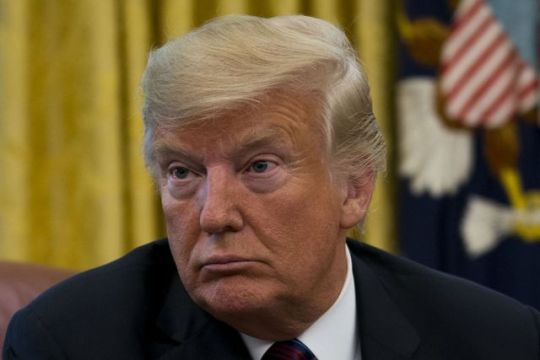
New Post has been published on https://shovelnews.com/and-then-i-go-and-spoil-it-all-by-saying-something-stupid-like-totally-on-our-terms-nafta-under-a-cloud/
And then I go and spoil it all by saying something stupid like 'totally on our terms': NAFTA under a cloud


Briefing highlights
What’s better for Canada on NAFTA?
Markets at a glance
Bank of Canada holds key rate steady
Central bank cites trade uncertainty
Nevsun agrees to takeover
Crescent Point names CEO, cuts jobs
Canada’s trade gap shrinks in July
U.S. trade deficit at five-month high
And then I go and spoil it all by saying something stupid like ‘I love you’
— C. Carson Parks, from the 1967 hit song Somethin’ Stupid, performed by Frank and Nancy Sinatra
Totally on our terms
— President Donald Trump, from his hit 2018 leaked off-the-record interview with Bloomberg News
NAFTA talks resume today under a cloud, raising the question of what’s better for Canada: no deal or a “somewhat worse” one.
There are benefits to Canada in the two-way deal struck between the U.S. and Mexico, analysts say.
But the question of what’s best for Canada is hanging out there after negotiators from Ottawa and Washington failed to reach a deal by what was said to be Friday’s deadline to join the pact that would overhaul the North American free-trade agreement.
Story continues below advertisement
Canada and the U.S. are divided. As The Globe and Mail’s Steven Chase, Robert Fife and Ian Bailey report, Prime Minister Justin Trudeau stressed Tuesday he will not agree to kill NAFTA’s dispute-settlement process or do anything that doesn’t shelter Canadian media from foreign ownership.
A quick recap:
President Donald Trump threatened to slap crippling tariffs on Canadian auto exports if the two sides can’t agree, and told Congress Friday he plans to push ahead with the U.S.-Mexico deal, though he added that Ottawa is working hard to strike an agreement.
And, oops, in an off-the-record interview that was leaked Friday, Mr. Trump said a new agreement would be “totally on our terms,” and that he was dangling the auto tariff threat over the heads of Foreign Affairs Minister Chrystia Freeland and her team.
(Here’s what Bank of Montreal chief economist Douglas Porter said about that: “Trump continually wielded the cudgel of ‘Carmaggedon’ over Canada [last] week, stating that ‘the easiest thing we can do is tariff their cars.’ It’s unclear what’s more obnoxious about that statement – the casual economic threat against a long-time friend and neighbour, or using ‘tariff’ as a verb.”)
Mr. Trump continued to push that theme on the weekend, warning on Twitter that “if we don’t make a fair deal for the U.S. after decades of abuse, Canada will be out,” and that Congress should keep its nose out of it.
That’s where things stand as Canada and the U.S. go back at it today.
Story continues below advertisement
Story continues below advertisement
Foreign Affairs Minister Chrystia Freeland
Chris Wattie/Reuters
“The problem is that, unlike in most negotiations, no deal will probably not mean that the status quo remains intact,” said Stephen Brown, the senior Canada economist at Capital Economics.
“Instead, Canada seems to have the choice between no NAFTA (plus the risk of auto tariffs) and a somewhat worse NAFTA. A somewhat worse NAFTA is likely to be the better option.”
Chapter 19 provisions mean Canada, the U.S. and Mexico can seek a panel of independent lawyers to arbitrate disputes, and “if Canada capitulates, it will find it harder to oppose any anti-dumping measures the U.S. imposes on commodity imports,” Mr. Brown said.
“But Chapter 19 has proved to be a pretty ineffective tool in preventing, for example, tariffs against softwood lumber,” he added.
“So its benefits seem smaller than the Canadian government claims. Ultimately, the negative effects of a somewhat worse agreement would be small and spread over a long time.”
But Mr. Trump taking the “nuclear option” of killing NAFTA would hit Canada hard and fast.
Story continues below advertisement
BMO’s Mr. Porter didn’t wade into a debate over what’s best, but did cite in a report “some potential positives” for Ottawa in the deal between the Americans and Mexicans, notably “some serious concessions” on autos by the latter.
“There were also some parts that Canada likely isn’t thrilled about handing over without some give in return from the U.S., including extended patent protection on drugs, longer copyrights, and the ramped-up de minimis limits,” he added.
Andrew Kenningham, chief global economist and Mr. Brown’s colleague at Capital Economics, warned about “overinterpreting” every development in what has become a global trade war.
“In particular, we doubt that the U.S.-Mexico accord means that wider trade tensions will dissipate,” Mr. Kenningham, said
“For a start, talks between the U.S. and Canada have not been concluded, and there are legislative hurdles to cross,” he added.
Read more
Steven Chase, Robert Fife, Ian Bailey: PM says Canada will stand firm on dispute resolution, media in talks
Aides sought to thwart Trump on NAFTA, new book reveals
David Parkinson: Rates, currency, NAFTA talks serve as risks to Canadian economy
Eddie Goldenberg: Canada still has a strong hand in NAFTA negotiations
Adrian Morrow: NAFTA talks set to resume with key dispute resolution system at centre of table
John Ibbitson: NAFTA agreement possible, but U.S. must bend on Chapter 19
Trump says Canada not needed in NAFTA deal, warns Congress not to interfere
Barrie McKenna: The harsh reality: Canada’s in a near-impossible situation on NAFTA, experts say
Lawrence Martin: A ‘win-win-win’ for Canada on NAFTA? Forget it
Adrian Morrow, Robert Fife: Canada-U.S. NAFTA talks to resume next week
Why Canada could tell the U.S. to shove it on NAFTA
Konrad Yakabuski: Freeland’s so-called friends in Mexico bid her adios on NAFTA
Victoria Gibson: Why NAFTA’s Chapter 19 trade clause may be more important than ever
Adrian Morrow, Robert Fife: U.S., Mexico reach NAFTA breakthrough, clearing way for Canada’s return
Barrie McKenna: For Ottawa, opening up the dairy industry will be the price of a trade deal
Bullish and bearish scenarios as Canadian dollar now ‘more vulnerable to NAFTA crunch time’
Markets at a glance
Read more
Follow our Inside the Market
Poloz holds the line
The Bank of Canada is starting to put some of its demons to rest, while others continue to plague the outlook.
As The Globe and Mail’s Barrie McKenna reports, the central bank held its key overnight ready at 1.5 per cent today, though it still said rates will be “warranted” down the line.
Economists had expected governor Stephen Poloz, senior deputy Carolyn Wilkins and their colleagues to hold steady today, and move again in October.
As for its demons, the central bank said the housing market is “beginning to stabilize as households adjust to higher interest rates and changes in housing policies.” As well, borrowing has “moderated” and the debt burden among households is starting to inch down.
Ah, but then there’s trade.
“Elevated trade tensions remain a key risk to the global outlook and are pulling some commodity prices lower,” the Bank of Canada said in its statement.
But “while uncertainty about trade policies continues to weigh on businesses, the rotation of demand towards business investment and exports is proceeding. Despite choppiness in the data, both business investment and exports have been growing solidly for several quarters.”
It added that it is monitoring the NAFTA talks closely.
Bank of Canada senior deputy governor Carolyn Wilkins and Governor Stephen Poloz
PATRICK DOYLE/The Canadian Press
“Discretion is the better part of valour, so a Bank of Canada potentially only days away from getting some clarity on NAFTA was wise enough to defer the next rate move until that news was at hand,” said CIBC World Markets chief economist Avery Shenfeld.
“An October rate hike looks highly likely if, as we expect, we have the makings of a NAFTA deal by then,” he added.
Read more
Barrie McKenna: Bank of Canada holds rates steady as it eyes NAFTA fallout
More news
Streetwise
Tim Kiladze: Dundee Corp. faces investor spat over preferred share repayment
Insight
Konrad Yakabuski: Proposed new NAFTA auto rules in U.S.-Mexico deal are as clear as mud
Inside the Market
Ian McGugan: Don’t use the longest bull market as a reason to sell
In case you missed it
Matt Lundy: Canada’s pot ETFs are struggling to bring in new cash
Source: https://www.theglobeandmail.com/business/briefing/article-and-then-i-go-and-spoil-it-all-by-saying-something-stupid-like/
0 notes
Photo


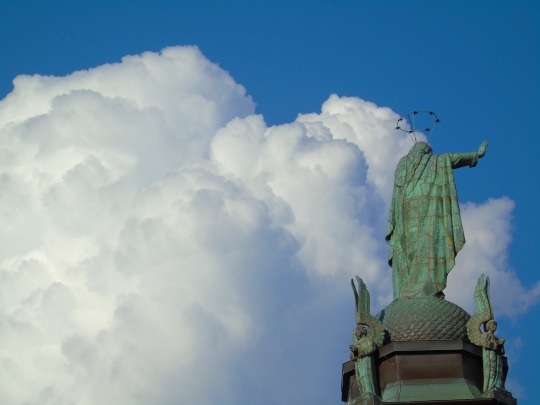
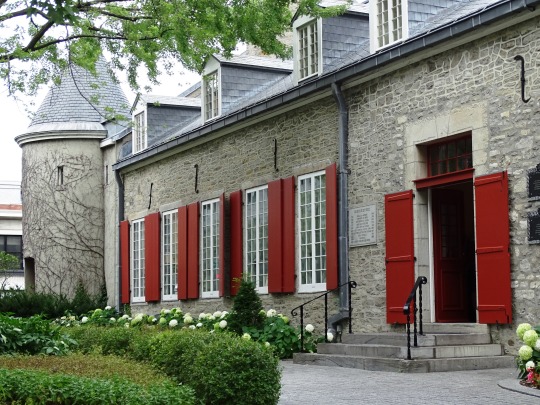

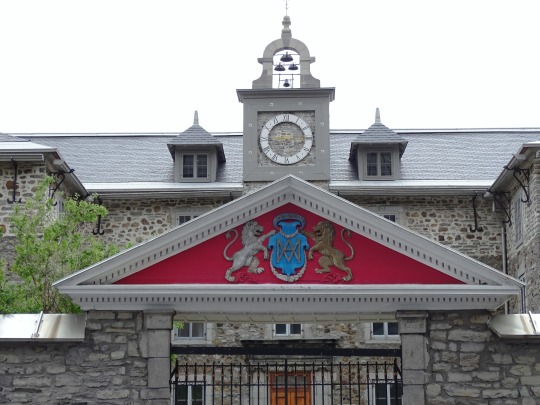

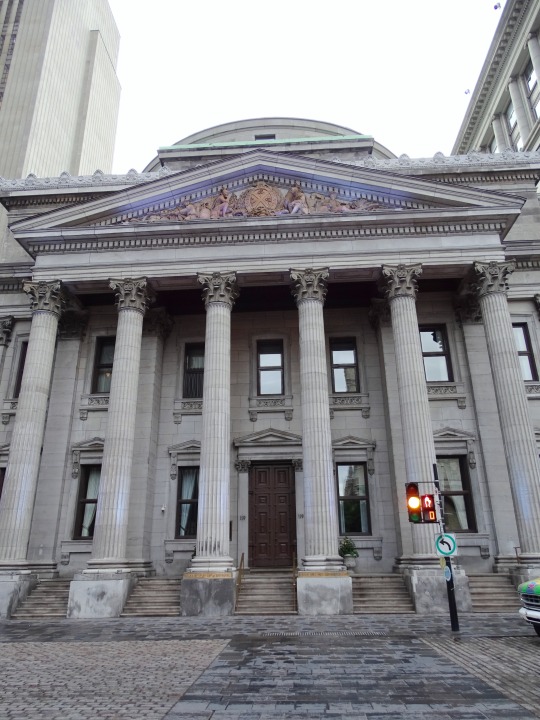

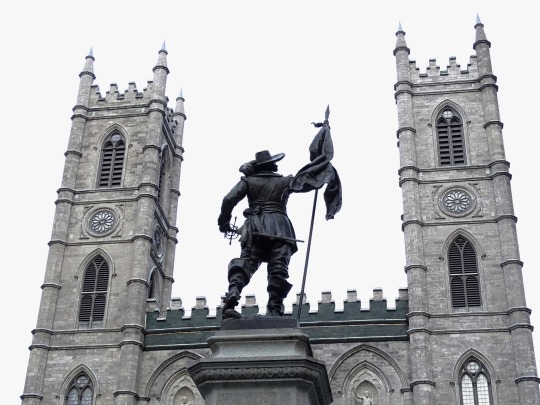
The British, under General Jeffery Amherst, marched from Lachine through Nazareth Fief (the name used for Griffintown at this time), through the Recollet Gate and into the walled city of Montreal. The Articles of Capitulation of Montreal were signed on September 8 1760, in the British camp before the city of Montréal. Most of the North American fighting ended with the surrender of Montréal.
#Basilique Notre-Dame de Montréal#Articles of Capitulation of Montreal#Canada#8 September 1760#anniversary#Canadian history#Montréal#Québec#2015#summer 2018#cityscape#architecture#original photography#Notre-Dame-de-Bon-Secours Chapel#Bonsecours Market#City Hall#Château Ramezay#Saint-Sulpice Seminary#Paul Chomedey de Maisonneuve by Louis-Philippe Hébert#Aldred Building
10 notes
·
View notes
Photo


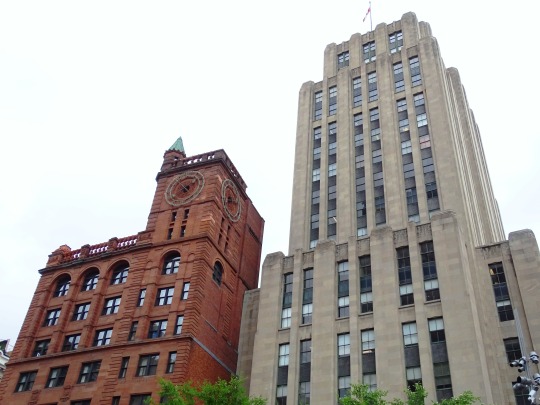




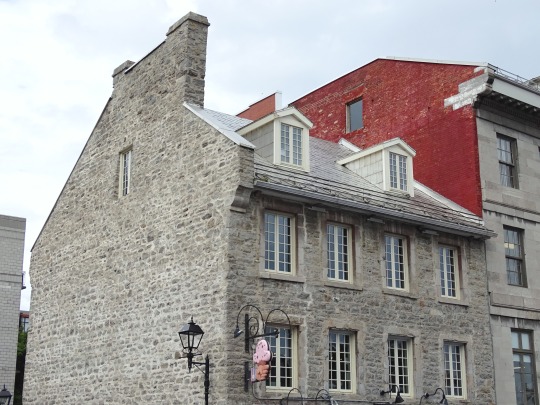


The British, under General Jeffery Amherst, marched from Lachine through Nazareth Fief (the name used for Griffintown at this time), through the Recollet Gate and into the walled city of Montreal. The Articles of Capitulation of Montreal were signed on September 8 1760, in the British camp before the city of Montréal. Most of the North American fighting ended with the surrender of Montréal.
#Articles of Capitulation of Montreal#8 September 1760#260th anniversary#Canadian history#City Hall#architecture#Montréal#Québec#Canada#travel#summer 2018#original photography#cityscape#vacation#landmark#tourist attraction#Château Ramezay#Aldred Building#Saint-Sulpice Seminary#Notre-Dame-de-Bon-Secours Chapel#Maison Jacob-Wurtele#Bank of Montreal#Maisonneuve Monument#2015
16 notes
·
View notes
Photo






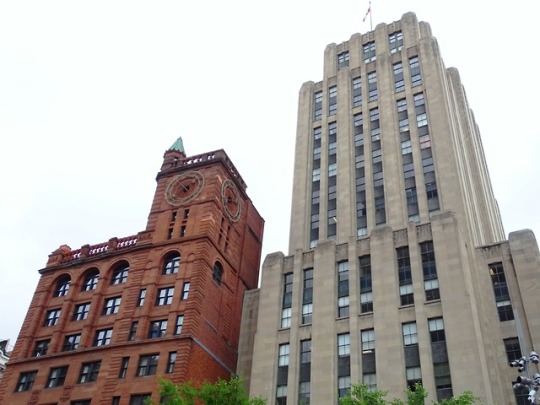

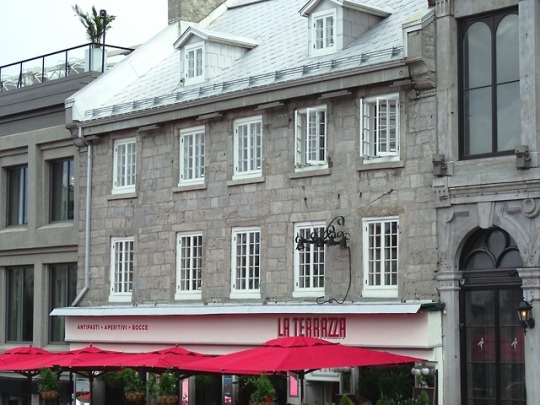
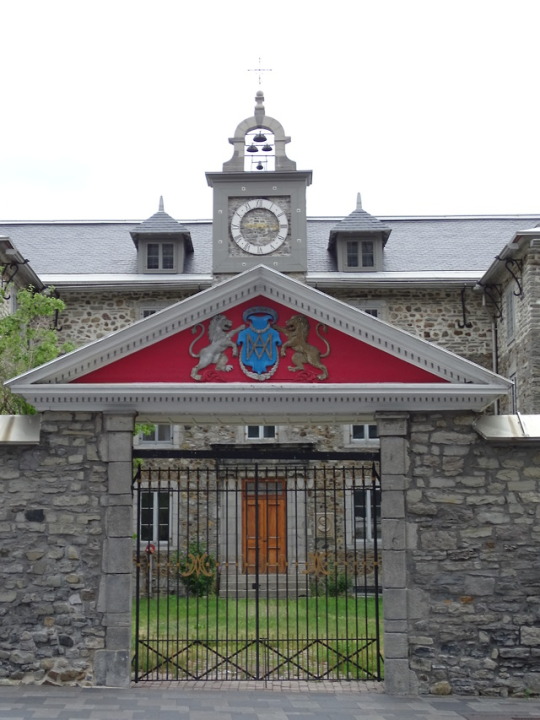
The British, under General Jeffery Amherst, marched from Lachine through Nazareth Fief (the name used for Griffintown at this time), through the Recollet Gate and into the walled city of Montreal. The Articles of Capitulation of Montreal were signed on September 8 1760, in the British camp before the city of Montréal. Most of the North American fighting ended with the surrender of Montréal.
#Bonsecours Market National Historic Site of Canada#Montréal#Québec#travel#Canada#summer 2018#cityscape#architecture#8 September 1760#facade#Édifice Lucien-Saulnier#Articles of Capitulation of Montreal#anniversary#original photography#City Hall#Basilique Notre-Dame de Montréal#Aldred Building#Paul Chomedey de Maisonneuve by Louis-Philippe Hébert#New York Life Insurance Building#Château Ramezay#Maison Perrine-Charles-Cherrier#Notre-Dame-de-Bon-Secours Chapel#Saint-Sulpice Seminary
1 note
·
View note